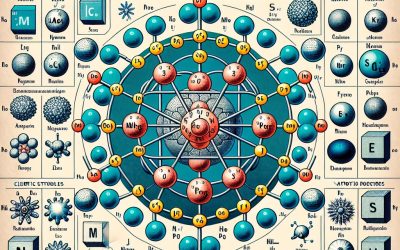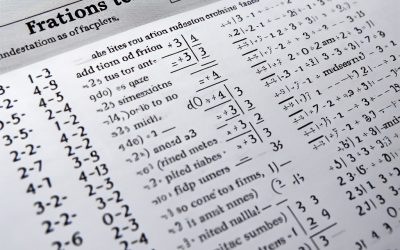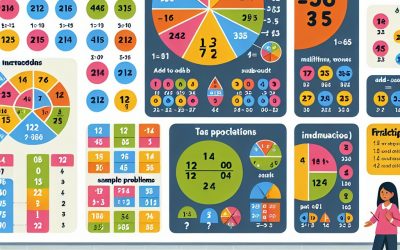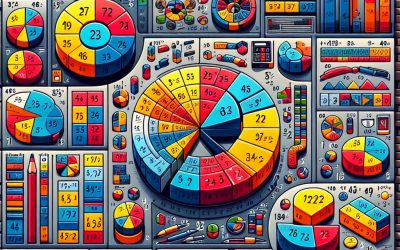Explore the World Through Geography, Natural Resources & Daily History
Clear, reliable and engaging guides that help you understand our planet — from UK geography education to global natural resources and On This Day history events.
Explore, discover, and learn about the wonders of our world! At Earth Site, we’re passionate about bringing geography, history, and science to life for curious minds of all ages. Whether you’re delving into historical events, uncovering the mysteries of the natural world, or seeking interactive resources, you’re in the right place.
Here, you can uncover the stories behind historical events, explore the natural wonders of our planet, and gain valuable insights into how the Earth’s systems shape our daily lives. From the towering peaks of mountain ranges to the far-reaching impacts of human innovation, we aim to make every topic both engaging and informative.
Start your journey of discovery with us today, and let’s make learning an adventure!
What We Cover
Earth Site brings together engaging and accessible educational content designed to help you understand the world, its history, and its natural systems.
🌍 Geography Education (UK & Worldwide)
We publish clear, easy-to-understand geography resources for students, teachers and curious learners. Our guides support geography education in the UK and cover physical geography, climate, ecosystems, population, and global development.
⛏️ Natural Resources & Environmental Geography
Explore detailed country profiles covering natural resources, mining, energy, geology and global environmental challenges. We show how nations manage minerals, water, land and ecosystems, and why these resources matter.
📅 On This Day in History
Every day has a story. Our On This Day history series features major events, anniversaries, traditions, and cultural milestones from around the world — with timelines, context, and fun facts.
TIMELINE
Sun
The Sun’s Rotation Sections of the Sun The Core The Radioactive Zone The Convection Zone The Photosphere The Chromosphere The Corona As illustrated the sun rotates in an anti-clockwise direction as observed from its most northern point. The solid core rotates in much the same way as all the solid planets in the solar system, however as the outer shell is made up from gas and plasma, it spins at different speeds from the equator as it does in the poles (yet still in the same direction). At the equator the sun rotates faster, taking 26.8 Earth days to make a full rotation, whereas it takes up to 36 Earth days to make one rotation at the poles. The Sun’s Rotation The rotation of the suns outer layers have a very powerful effect on the magnetic field produced by the sun. Because the material of the sun rotates at different speeds it causes the magnet lines of force to become tangled and even tear. Magnetic lines of force can be viewed on a normal magnet using iron fillings. By placing a piece of paper above a magnet and sprinkling iron filings on the paper, curved lines appear between the north and south poles. The two ends of torn lines can show up on the Photosphere as sunspots where they cool the plasma considerably. Another effect of this can be solar flares that are massive expulsion of energy when the lines snap and reconnect and occasionally this forces an eruption of actual plasma from the Corona, a phenomenon we call Coronal Mass Ejection...
Solar System
Taxonomy – The Classification of Organisms
Taxonomy is a branch of biology concerned with the classification of organisms into groups such as Kingdom, Phylum, Class etc. History of Taxonomy Modern Taxonomy History of Taxonomy Over the ages many people have set out to categorise the world around us for various reasons. Plants, and in particularly herbs, were categorised by their healing properties and this classification (as set out by a 2nd century physician Dioscorides in ‘De Materia Medica’) was used by doctors for many years. For biologists though it was the work of Swedish botanist, zoologist and physician Carl Linnaeus (1707 – 1778) that created modern taxonomy. His structure for naming and grouping all life on the planet was so straight forward; it is the bases for the modern taxonomy system. For thousands of years humans looked around at living organisms and found that they could place them into one of two groups, either flora or fauna. This was the original bases for classification, as set out by Linnaeus, with the animal kingdom (Kingdom Animalia) and the plant kingdom (Kingdom Plantae) at the head of the hierarchical system. This seemed adequate until our understanding of unicellular organisms made classification into the two kingdoms difficult at best. In 1969 R.H. Whittaker, a professor of biology in Ecology and Systematics at Cornell university wrote a paper ‘New Concepts of Kingdoms of Organisms – Evolutionary relations are better represented by new classifications than by the traditional two kingdoms’ (see Whittaker_1969). This paper has been accredited to bringing us the five Kingdom structure we now use today. Modern Taxonomy Taxonomy is the process of grouping...
Periodic Table of Elements
Radioactive Dating
Radioactive dating is a process whereby a person can calculate the age of an object by measuring its rate of radioactive decay. What is Radioactive Dating? Carbon Dating Geological Dating Isotopes used in Geological Dating Radioactive Dating with Uranium-238 What is Radioactive Dating? Radioactive dating is a process whereby a person can calculate the age of an object by measuring its rate of radioactive decay. This is because the rate of decay is consistent with any particular isotope and is not affected by outside environmental influences. A sample of radioactive material will contain a certain amount of the unstable isotope that has not yet decayed into its stable form. By comparing the amount of unstable and stable isotopes we can calculate the age of some materials. In a particular sample of radioactive material it takes a set amount of time for half of the nuclei to succumb to radioactive decay which is called the radioactive half-life. Carbon Dating All life forms intake carbon during their lives and a small proportion of that carbon is in the form of carbon-14 (due to cosmic rays). Within the body of living organism the percentage of carbon-14 and carbon-12 meet a certain level which is sustained until its death. At this point no more carbon is ingested and the ‘clock’ starts. The levels of carbon-14 (6C14) start to drop as it decays into a nitrogen ion (7N14) and by knowing the rate of decay you can compare the levels carbon-12 and carbon-14 to calculate the approximate age of the organic material. This method however is only suitable...
Isotopes – what are they?
Isotopes are the variations of elements. An element is defined by the amount of its protons while an isotope of that element has different amount of neutrons. What are isotopes? How are isotopes formed? Stable Isotopes Unstable Isotopes (Radioactive Isotopes) Alpha Radiation or Alpha Decay Beta Radiation or Beta Decay Radioactive half-life What are Isotopes? Here is the chemical symbol for helium as you might see it on a periodic table. The number at the top is known as the atomic number and is actually the number of protons that are found in the atom. The number at the bottom is the atomic mass of the element. As electrons are considered to little or no mass the atomic weight is the amount of protons and neutrons normally found in that element. While the atomic number of an element will always remain the same (hydrogen will always have one proton, helium will always have two etc) the atomic mass can change naturally. This happens when more neutrons are added to the element in some way. How are isotopes formed? Taking the most basic element, hydrogen, it has a one proton and one electron as shown in the diagram. In the process of nuclear fusion in the sun these hydrogen atoms are split into individual elements of protons and electrons that float around in the form of plasma. The pressure and heat that cause the hydrogen to turn to plasma, rather than gas, also make it easy for the particles to form new atoms. When one of these free protons collides with a hydrogen atom...
Subtracting Fractions with Different Denominators Test
Your Subtracting Fractions with Different Denominators Test may take a minute to load. If you have to navigate away from this page for any reason, don’t worry, you will have the option to resume your test from the point you left upon your return. The test may have multiple choice, multiple answer or true/false questions and is timed but has no time limit. It should be considered an aid to study for exams or merely a test of your knowledge base giving you indication of areas you may need further study in. Once you have completed your test you will be able to review your results. This will give you some indication of the area you need further study or which areas you are proficient. We recommend you take the Subtracting Fractions with Different Denominators Test before reading the subject matter. If you score 80% or more than you have the option of skipping the section but if you score less than 80% we recommend you read the material associated. Then try the test again until you are able to gain a passing result of 80% correct. Error: Embedded data could not be displayed. Why Use the Subtracting Fractions with Different Denominators Test? As previously stated tests give the user indication of their strengths and weaknesses. This allows them to spend less time studying things they are proficient in and spend more time improving their knowledge where they may have gaps. Tests are also a great tool for revision because they require the user to recall information they...
Subtracting Fractions with the Same Denominator Test
If you have to navigate away from this page for any reason, don’t worry, you will have the option to resume your test from the point you left upon your return. The test may have multiple choice, multiple answer or true/false questions and is timed but has no time limit. It should be considered an aid to study for exams or merely a test of your knowledge base giving you indication of areas you may need further study in. Once you have completed your test you will be able to review your results. This will give you some indication of the area you need further study or which areas you are proficient. We recommend you take the Subtracting Fractions with the Same Denominator Test before reading the subject matter. If you score 80% or more than you have the option of skipping the section but if you score less than 80% we recommend you read the material associated. Then try the test again until you are able to gain a passing result of 80% correct. Error: Embedded data could not be displayed. Why Use the Subtracting Fractions with the Same Denominator Test? As previously stated tests give the user indication of their strengths and weaknesses. This allows them to spend less time studying things they are proficient in and spend more time improving their knowledge where they may have gaps. Tests are also a great tool for revision because they require the user to recall information they may have previously learnt, be it recently or some time ago. This recall of information improves its retention in your mind by...
Adding Fractions with Different Denominators Test
Your Adding Fractions with Different Denominators Test may take a minute to load. If you have to navigate away from this page for any reason, don’t worry, you will have the option to resume your test from the point you left upon your return. The test may have multiple choice, multiple answer or true/false questions and is timed but has no time limit. It should be considered an aid to study for exams or merely a test of your knowledge base giving you indication of areas you may need further study in. Once you have completed your test you will be able to review your results. This will give you some indication of the area you need further study or which areas you are proficient. We recommend you take the Adding Fractions with Different Denominators Test before reading the subject matter. If you score 80% or more than you have the option of skipping the section but if you score less than 80% we recommend you read the material associated. Then try the test again until you are able to gain a passing result of 80% correct. Error: Embedded data could not be displayed. Why Use the Adding Fractions with Different Denominators Test? As previously stated tests give the user indication of their strengths and weaknesses. This allows them to spend less time studying things they are proficient in and spend more time improving their knowledge where they may have gaps. Tests are also a great tool for revision because they require the user to recall information they...
Adding Fractions with the Same Denominator Test
Your Adding Fractions with the Same Denominator Test may take a minute to load. If you have to navigate away from this page for any reason, don’t worry, you will have the option to resume your test from the point you left upon your return. The test may have multiple choice, multiple answer or true/false questions and is timed but has no time limit. It should be considered an aid to study for exams or merely a test of your knowledge base giving you indication of areas you may need further study in. Once you have completed your test you will be able to review your results. This will give you some indication of the area you need further study or which areas you are proficient. We recommend you take the Adding Fractions with the Same Denominator Test before reading the subject matter. If you score 80% or more than you have the option of skipping the section but if you score less than 80% we recommend you read the material associated. Then try the test again until you are able to gain a passing result of 80% correct. Error: Embedded data could not be displayed. Why Use the Adding Fractions with the Same Denominator Test? As previously stated tests give the user indication of their strengths and weaknesses. This allows them to spend less time studying things they are proficient in and spend more time improving their knowledge where they may have gaps. Tests are also a great tool for revision because they require the user to...
Improper Fractions Test
Your Improper Fractions Test may take a minute to load. If you have to navigate away from this page for any reason, don’t worry, you will have the option to resume your test from the point you left upon your return. The test may have multiple choice, multiple answer or true/false questions and is timed but has no time limit. It should be considered an aid to study for exams or merely a test of your knowledge base giving you indication of areas you may need further study in. Once you have completed your test you will be able to review your results. This will give you some indication of the area you need further study or which areas you are proficient. We recommend you take the Improper Fractions Test before reading the subject matter. If you score 80% or more than you have the option of skipping the section but if you score less than 80% we recommend you read the material associated. Then try the test again until you are able to gain a passing result of 80% correct. Error: Embedded data could not be displayed. Why Use the Improper Fractions Test? As previously stated tests give the user indication of their strengths and weaknesses. This allows them to spend less time studying things they are proficient in and spend more time improving their knowledge where they may have gaps. Tests are also a great tool for revision because they require the user to recall information they may have previously learnt, be it recently or some...
Simplifying or Reducing Fractions Test
Your Simplifying Fractions Test may take a minute to load. If you have to navigate away from this page for any reason, don’t worry, you will have the option to resume your test from the point you left upon your return. The test may have multiple choice, multiple answer or true/false questions and is timed but has no time limit. It should be considered an aid to study for exams or merely a test of your knowledge base giving you indication of areas you may need further study in. Once you have completed your test you will be able to review your results. This will give you some indication of the area you need further study or which areas you are proficient. We recommend you take the Simplifying Fractions Test before reading the subject matter. If you score 80% or more than you have the option of skipping the section but if you score less than 80% we recommend you read the material associated. Then try the test again until you are able to gain a passing result of 80% correct. Error: Embedded data could not be displayed. Why Use the Simplifying Fractions Test? As previously stated tests give the user indication of their strengths and weaknesses. This allows them to spend less time studying things they are proficient in and spend more time improving their knowledge where they may have gaps. Tests are also a great tool for revision because they require the user to recall information they may have previously learnt, be it recently or some...










